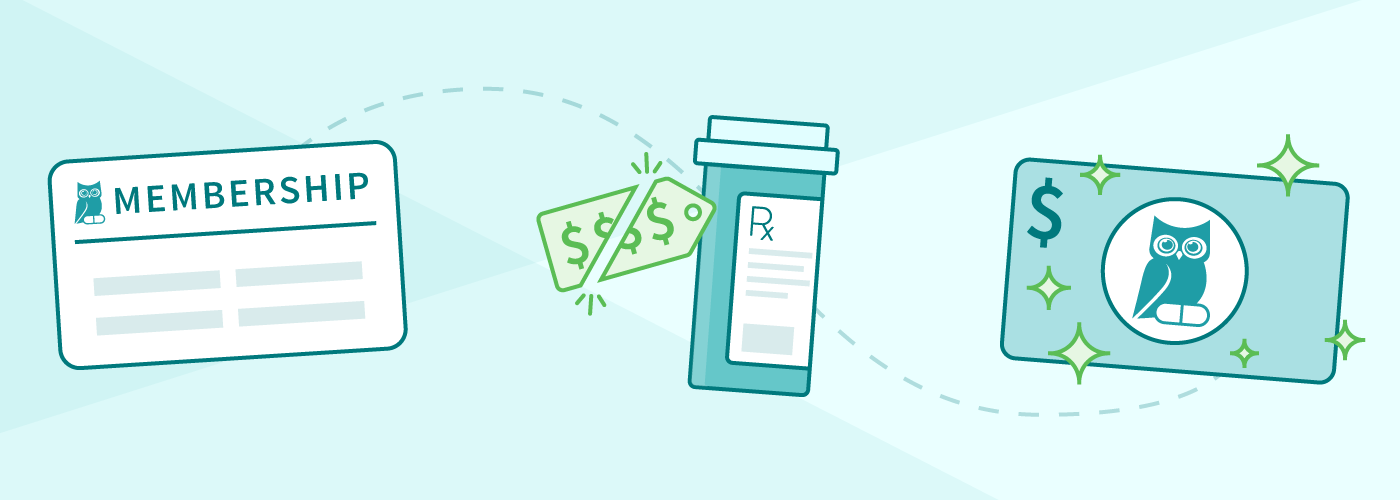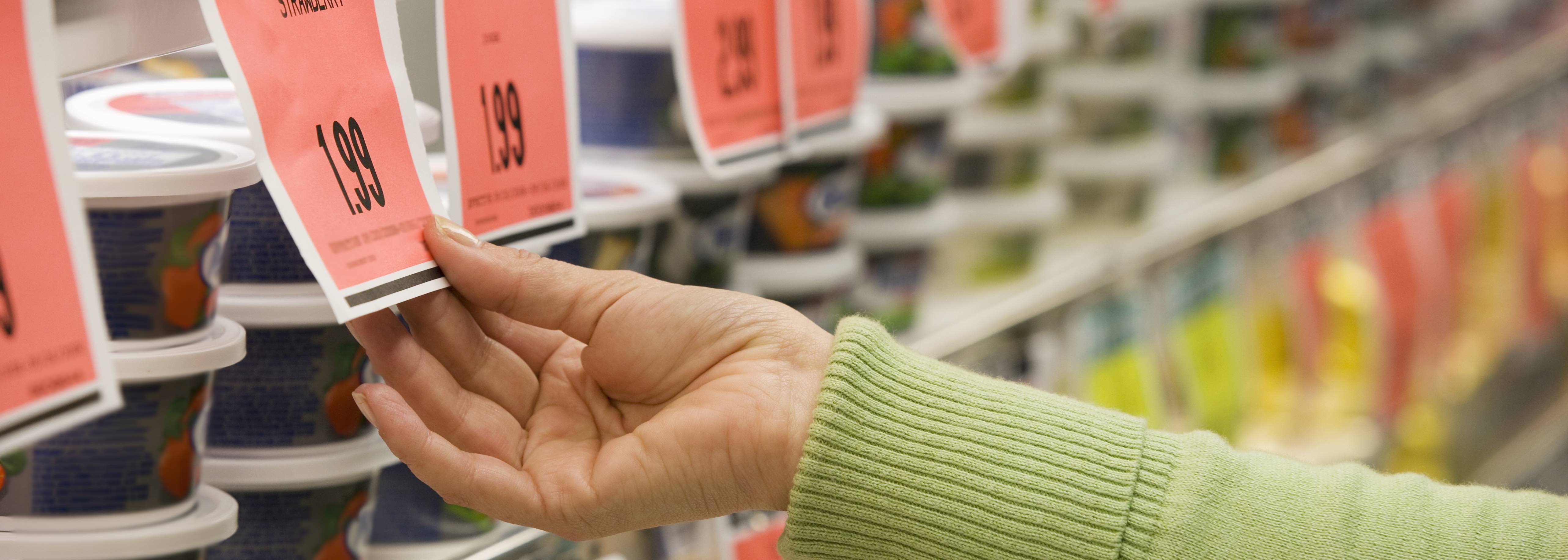
The chances that you have a rewards membership are high: according to Colloquy, American consumers hold 3.3 billion memberships in customer loyalty programs, a 26 percent increase over the number of memberships reported in 2013. Each American is a member of about 10 customer loyalty programs. The majority of Americans participate in customer rewards programs, and customers expect companies to offer them.
But one area where Americans still need to save is on prescription drugs. Several companies offer coupons to save on prescription drugs, but those coupons often contribute to increased insurance premiums. No other free pharmacy discount card provider enables you to consistently save and earn cash rewards, except RefillWise.
Our simple solution – a free pharmacy discount card – enables you to save up to 80 percent on your prescription medications. The first time you use RefillWise to fill a prescription, you earn a $5 gift card. Then, after every tenth prescription filled, you earn another $5 gift card which may be used for anything in store. And you can earn drug store or grocery store chains rewards at the same time.
Unlike grocery chains and gas stations that offer rewards, RefillWise earns cash rewards at any chain pharmacy and most independent pharmacies too. You don't have a rewards card that will enable you to save on premium gas at several competing filling stations. You also don't have a card that enables you to save on groceries – or specific kinds of foods – at competing grocery chains. They don't exist. Our card can be used in all 50 states and Puerto Rico. We want it to be convenient and easy for you to pay the lowest possible prices for your prescription drugs so you can stay healthy and afford other groceries you and your family need.

It is flu season, but you probably didn't need to be told that. If you haven't gotten sick yet, you probably know someone who has, or you vividly remember years past when you spent a few days miserable in bed.
In the United States, flu season begins as early as October and can continue into May, although the peak is usually between December and March.
Prevention
As usual, the CDC recommends that most people get a flu vaccine. The World Health Organization (WHO) recommends the vaccine for certain vulnerable populations including young children and the elderly. You will want to check with your healthcare provider if you have any allergies or have other concerns about the vaccine. Each year a few of the many flu strains are chosen for the vaccines. And for the 2016-2017 flu season, the CDC is only recommending the flu shot, not the nasal mist.
Other than getting vaccinated, the best way to avoid the flu is to:
avoid people with the flu
wash your hands frequently
keep things clean
eat well, sleep well
This Flu Season
Here in the beginning weeks of 2017, we are well into flu season. The CDC keeps track of flu statistics weekly and posts them. As of late December, the flu status for the country was listed as Elevated with almost all areas reporting an elevated level of flu-like illnesses.
Technically, the flu season is a yearly epidemic; that's what "flu season" is. Some seasons are worse than others due to a number of factors. It is hard to predict what will happen each year, what strains of the flu will be most common, how long the season will last, and whether it will be a difficult, normal, or mild season.
Is this the Flu?
fever (but not always)
cough
sore throat
runny or stuffy nose
body aches
headache
chills
fatigue
sometimes diarrhea or vomiting
Treating the Flu
Because the flu is a virus, antibiotics do not treat the flu. However there are antiviral medications available to help the body fight the virus. There are also other medications that can help ease your symptoms such as cough medicines and fever reducers.
Other than that, the best thing to do if you have the flu is stay home, rest, and practice good hygiene to avoid sharing your flu with others. Don't return to your normal activities until you have been fever free for at least 24 hours, without the help of a fever reducer.
Being Sick is Expensive
Not only does the flu make you miserable, it can be a stressful time as you take off work and face healthcare expenses. The average person with health insurance pays about $130 when they have the flu. If you are underinsured or uninsured, that cost can go up significantly.
If you need a prescription to help you survive the flu and your fear of the cost is keeping you from heading to the pharmacy, RefillWise can help. You can use it in place of of a prescription card to receive discounts and rewards. It's one way to reduce the burden of being sick.

More Americans are buying more medicine for their pets. If you're reading this blog, you likely are too. Retail sales of pet medications in the United States reached $8 billion in 2013 alone – an increase of $160 million from 2012. And there are no signs of slowing down. By 2018, the market will top $10 billion.
There are several new products on the market.
Veterinarians are selling more non-flea and tick drugs.
Pet ownership has increased.
The last point is the most significant. According to the American Pet Products Association, pet ownership among all U.S. households increased to 68 percent, which is an increase of 82.5 million pet-owning households in 2012. More households own a dog (47 percent) than own a cat (37 percent).
As pet ownership increases, prescription purchases do too.
If you own a pet, you care for your pet. If you are lucky enough to have pet insurance, your premiums may have increased. With more pet medication and supplements ensuring longer, healthier lives for pets, you can save on care for your dog or cat today.
Your pet deserves the best care, and that’s where we help you.
With RefillWise, you can save up to 80% – or an average of $15 – per prescription.
As a pet owner, it makes the most sense to use RefillWise since your pet's prescription can be aggregated into total prescription savings. For example, if you are picking up a prescription for yourself or a friend or family member – paired with your pet – you can get savings and rewards faster than you normally would.
Think about it:
You receive a $5 gift card (as good as cash) the first time you pick up a prescription — for yourself or your pet — using your RefillWise card.
For every tenth prescription you purchase – you earn an additional $5 gift card – usable for anything in store, not just prescriptions.
By using your account to purchase additional prescriptions for your pets and for your family members, you will likely get faster turnaround on savings.
RefillWise is accepted at all chain pharmacies and most independent pharmacies nationwide. By using RefillWise for your pet, you can save more and get rewards faster – easily and conveniently.
It's a New Year, again. 2017 is here with all the hopes and plans of any new year. And like with any new year, it will come with the plans we love to make for growth and fresh starts. If you are like most people, you probably have goals related to your health this year.

According to Nielsen's the top 5 New Year's Resolutions in 2015 were:
Stay fit and healthy
Lose weight
Enjoy life to the fullest
Spend less, save more
Spend more time with family and friends
Three of these top five are related to health, which is not surprising. These resolutions are so common that magazines and newspapers will be filled with articles about how to accomplish these goals - workout plans, new diets, and advertising from the health industry about how they can help you achieve your goals.
Goal out of reach?
Of course, the reason these resolutions are so common year after year is because we have to try again every year after failing to keep them. The goals themselves are not bad, but there are barriers to achieving these goals that are difficult to overcome. While we each have to be responsible for our own choices, the cost of health care can be a significant problem if you are trying to achieve any of the health related goals.
Will you go in for that well-check, or avoid it since you have to pay out of pocket?
Will you schedule that appointment about your recent weight gain, or avoid it because you know the tests will cost too much?
Will you choose to pay for the expensive medication or your child’s tuition?
Increasing Cost
The cost of healthcare is increasing and it is having a real impact on our health. When health care costs go up, more people have to avoid necessary medical care including doctor's visits and medications. Or they spend the money and are unable to afford other things that they need.
Costs have been growing significantly in the past few years and are expected to continue to grow 6.5% this next year. You may find your premiums increase or that your deductible is higher. Certain prescription drugs you use may be excluded from your prescription plan.
Achieving Your Goals
So if you want to achieve your health related goals, but the cost of healthcare is keeping you from doing so, what can you do?
Shop smart. There are simple ways to lower your health care costs such as asking for discounts and shopping around.
Start the conversation. Let your doctor know your goals and financial limitations. They may be able to help you find something that works for you without breaking the bank.
Use RefillWise. If you need prescription medicine to keep resolutions like losing weight or quitting smoking, your card may save you up to 80%. If your medication costs are keeping you from achieving other goals, use your RefillWise card at the pharmacy to save money and earn cash rewards.

If you knew that you had a big expense coming up next year, perhaps purchasing a car, or doing some remodeling at your house, you would likely conduct research, compare costs, and make sure that your money was buying you the best option for your needs.
Even with small purchases - groceries, household products, electronics - we want to be certain that we are getting the best value for our needs. It isn't uncommon to check sales, use coupons, and join rewards programs that earn you rewards and discounts.
Why not do the same with your healthcare?
The average family of four will spend around $10,000 a year on health insurance premiums. Then there are additional expenses for doctor's visits, tests, procedures, surgeries and prescription medication. Every year American families are spending thousands of dollars on healthcare, yet we aren't treating our healthcare the same way we do other major expenses. Being a savvy consumer can help you save money on your healthcare.
Ask Questions
Is this test necessary? Is there a generic version of this medication? How much will this cost? You do not have to accept your care without questions, and you might find that there is a more affordable way to receive the same quality of health care. You don't always have to sacrifice excellent health care for affordable health care.
Research insurance plans
If you have an employer-sponsored plan, check its coverage against what is available on your health exchange. Hire a broker to see if there is a policy that better fits your needs. You will want to check not just your premium, but your deductible, what is covered, and if the insurance plan covers your preferred doctors and prescriptions.
Research health care providers
Check with your physician to compare the cost of paying out of pocket versus using your insurance. You may find a provider offers a sliding scale fee or a separate price for people paying out of pocket. If you are having a complicated procedure done, such as surgery, you can check to make sure that every provider, including the anesthesiologist and the facility, is covered by insurance, not just the surgeon. Also, make sure you know which hospitals are in-network for your plan and don't head to an ER for something you can have taken care of at an urgent care clinic.
Ask for a Discount
If you receive a large bill for a medical procedure, call the billing department and see if they can offer you a discount. They may be able to give you a percentage discount, sometimes a quite substantial one, if you pay cash rather than using your insurance. Or you can even call ahead if you're planning a non-emergency procedure such as a birth or elective surgery.
Ask for a Gap Exception
If a provider you want to use is not covered by your insurance, you can request a gap exception if they are the only provider of their kind in your area. A gap exception gives you in-network coverage for an out-of-network provider.
Join RefillWise
RefillWise not only offers discounts on prescriptions, but it also rewards you for using it. Just like the reward programs at grocery stores, you can earn RefillWise and grocery store or pharmacy rewards at the same time when you purchase the prescriptions you need.






